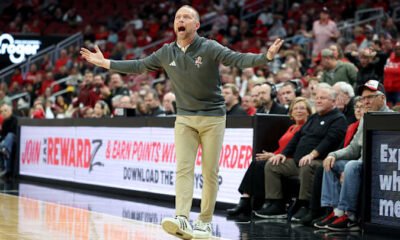Blog
Greg Byrne issues a statement regarding the historic settlement between the House and the NCAA.
Alabama AD Greg Byrne Hails Historic House v. NCAA Settlement as ‘Transformational’ for College Athletics
In a landmark ruling late Friday evening, the United States District Court for the Northern District of California granted final approval to the House v. NCAA settlement, ushering in a new era in which Division I institutions may directly share revenue with athletes and compensate them for past Name, Image, and Likeness (NIL) activities. Within hours of Judge Claudia Wilken’s decision, University of Alabama Athletics Director Greg Byrne took to X (formerly Twitter) to frame the development as “one of the biggest transformational changes in college athletics” and to outline the Crimson Tide’s proactive strategy for capitalizing on the ruling’s opportunities and navigating its constraints .
The Settlement’s Key Provisions and Historical Context
The House v. NCAA litigation combined three lawsuits dating back to 2014, challenging long-standing NCAA prohibitions on direct athlete compensation and seeking damages for athletes who were precluded from profiting on their NIL prior to mid-2021. Under the terms approved on June 6, 2025, the NCAA has agreed to:
- Revenue Sharing Model: Member institutions may distribute up to $20.5 million annually among their student-athletes, with the total share amount increasing each year.
- Back Damages: The NCAA will pay approximately $2.8 billion in damages to current and former Division I athletes who competed since January 2016.
- Roster Caps: Standardized maximum roster sizes will be imposed (e.g., 105 for football, 15 for men’s and women’s basketball, 34 for baseball, 25 for softball).
- NIL Clearinghouse Oversight: Third-party NIL deals valued at $600 or more must be vetted through a Deloitte-run clearinghouse (“NIL Go”), with non-compliant deals subject to eligibility or financial penalties .
Judge Wilken’s approval marks the third judicial milestone in college sports history—alongside the NCAA’s 1905 founding and the 1972 enactment of Title IX—according to Byrne’s remarks to ESPN .
Byrne’s Vision: Stability, Scholarship Growth, and NIL Innovation
In his Saturday morning statement, Byrne emphasized Alabama’s readiness and long-term positioning:
“One of the biggest transformational changes in college athletics is upon us, and Alabama Athletics has been planning for this day and making decisions that best position our department for long-term success. Approval of the House settlement offers stability going forward, which is something that is much needed.”
Byrne’s blueprint includes:
- Fully Funded Revenue Sharing
Alabama will allocate its maximum revenue share to student-athletes in each sport, ensuring every eligible athlete receives a distribution. - Expanded Scholarship Opportunities
The department plans to add new scholarships—Byrne previously announced intentions to increase scholarship counts by 40, with Title IX requirements mandating equal support for women’s sports . - Leveraging “Yea Alabama” NIL Platform
The existing “Yea Alabama” initiative—an in-house NIL branding and marketing engine—will be enhanced to provide bespoke, compliance-approved opportunities that integrate University and athlete brands. - Partnerships with Crimson Tide Sports Marketing and Learfield
These entities will expand local and national NIL campaigns, capitalizing on Alabama’s far-reaching fan base and media footprint .
Byrne concluded:
“We have a long history of being one of the most successful athletics departments, and we will carry on that tradition as we enter this new world. Roll Tide!”
Division of the “Spoils”: Financial and Competitive Considerations
While top-revenue sports—football and men’s basketball—traditionally underwrite the broader athletic budget (Alabama reported $26.4 million profit in football and $5.9 million in men’s basketball for fiscal 2024), Byrne acknowledged that no athletic department has unlimited resources. He told ESPN:
“It’s challenging. You have to weigh how to allocate the $20.5 million in a way that makes the most sense competitively and financially for Alabama. We don’t have a sport here just to have a sport.”
This sentiment points to difficult trade-offs:
- Roster Caps vs. Scholarship Caps: The SEC’s pre-emptive 85-scholarship cap for football (down from 105 maximum roster spots) reflects a cautious approach, and Alabama must decide whether to match the full 105 scholarships or maintain the SEC limit .
- Title IX Compliance: Half of any new scholarships must support women’s sports, requiring Byrne to balance men’s revenue streams with equitable funding across all programs.
- Non-Revenue Sports Support: Programs like gymnastics, softball, and volleyball often operate at a loss; Alabama will need to ensure that revenue sharing does not inadvertently undercut support for these teams.
Broader Implications Across College Sports
The approved settlement establishes a uniform framework for Division I, but schools will diverge in implementation:
- Power Five vs. Group of Five: Institutions in the Power Five conferences (SEC, Big Ten, ACC, Big 12, Pac-12) generally have greater revenue-generating capacity. Non-Power conferences may struggle to match distributions, potentially widening competitive gaps.
- Conference Coordination: Some conferences, like the SEC, have already set scholarship or roster limits; others may wait for peer alignment before finalizing policies.
- Compliance Infrastructure: The Deloitte clearinghouse introduces a centralized compliance process, but schools must staff NIL compliance offices to interface with the system and support athletes.
As Greg Byrne noted, the settlement “offers stability going forward”—a contrast to the past four years of shifting NIL guidelines, ad-hoc conference policies, and state-specific laws . However, athletic directors nationwide will need to forge clear policies to operationalize the system by July 1, 2025.
Voices from the Sidelines: Industry Reaction
Other athletic directors have expressed cautious optimism:
- SEC Peer Reaction: SEC ADs reportedly view the decision as a needed standardization, but expect debate on scholarship versus roster caps.
- NCAA Stance: The NCAA’s board chair remarked that the settlement enables the organization to “focus on governance and student-athlete welfare” rather than protracted litigation.
- Athlete Advocacy Groups: Player coalitions praised the settlement as a step toward fair compensation but continue to push for unrestricted NIL rights.
Media analysts predict an arms race for the highest compensation pools in revenue sports, balanced by greater equity for Olympic and non-revenue sports, provided institutions choose to reinvest.
Looking Ahead: Implementation and Long-Term Impact
With less than a month until the new system goes live, Alabama and its peers face an accelerated timeline:
- Budget Finalization (by mid-June 2025): Departments must finalize internal budgets reflecting revenue share allocations, scholarship increases, and compliance staffing.
- Compliance Training (through June 2025): Coaches and staff need education on roster management, NIL deal vetting, and Title IX coordination.
- Athlete Orientation (summer 2025): Student-athletes require clear guidance on revenue share distribution, NIL marketplaces, and compliance protocols.
Long term, experts anticipate:
- Recruiting Dynamics: Prospective recruits may weigh projected revenue share potential alongside traditional factors like academic programs and championship viability.
- Conference Realignments: Financial imbalances could accelerate conference shifts as schools seek groups with similar resource capabilities.
- Evolving NCAA Role: Freed from major litigation, the NCAA may pivot toward enhanced academic support, health and safety initiatives, and governance modernization.
Conclusion: A New Chapter for College Athletics
For Greg Byrne and the University of Alabama, the House v. NCAA settlement represents both a historic reckoning and a strategic inflection point. By heralding the decision as one of the three watershed moments in the 120-year history of collegiate sports, Byrne captured the magnitude of change awaiting every Division I institution. Now, the challenge lies in translating legal approval into operational excellence: funding athletes equitably, sustaining competitive advantage, and preserving the broad-based, championship-driven ethos that defined Alabama’s past while steering boldly into an unsettled future.
As campuses nationwide mobilize to meet the July 1 deadline, Byrne’s rallying cry—“Roll Tide!”—resonates as more than a slogan. It’s a declaration of purpose: to lead in an era where athletic achievement, student welfare, and financial stewardship must align in unprecedented ways. The coming months will reveal which institutions can adapt most adeptly, but one thing is clear: college athletics will never be the same.
-

 Blog5 months ago
Blog5 months agoPat Kelsey sends a strong three-word fiery message to the Louisville basketball’s team after their Cardinals 14th win…
-

 Blog7 months ago
Blog7 months agoNetflix releases “The Underdog,” a much-anticipated documentary about Drew Brees. slated for publication on the 25th
-

 Blog5 months ago
Blog5 months agoMikaela Shiffrin responds to cross-country skier Jessie Diggins’ letter following her failure to secure a solitary podium finish at the FIS Nordic Worlds
-

 Blog3 months ago
Blog3 months agoBehind the Turns: Netflix’s Upcoming Documentary on Mikaela Shiffrin’s Fights, Fears, and Love
-

 Blog4 months ago
Blog4 months agoLegacy Tour Led Zeppelin has officially confirmed their 2026 reunion tour, which will be their first extensive live performances since 2007. The “Led Zeppelin Legacy Tour 2026” will begin on June 10, 2026, at Los Angeles’ SoFi Stadium.
-

 Blog5 months ago
Blog5 months agoWomen’s Slalom Run 1 at the FIS Alpine Skiing World Cup: Are
-

 Blog5 months ago
Blog5 months ago“Courtside to Aisle-Side: Tyrese Haliburton and Jade Jones Set New Wedding Date”
-

 Blog7 months ago
Blog7 months agoFederica Brignone: “I’m fine, but my return to skiing is far off.”
